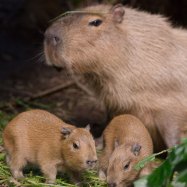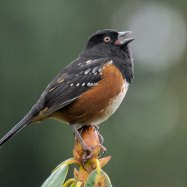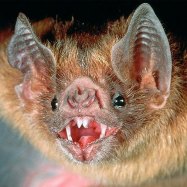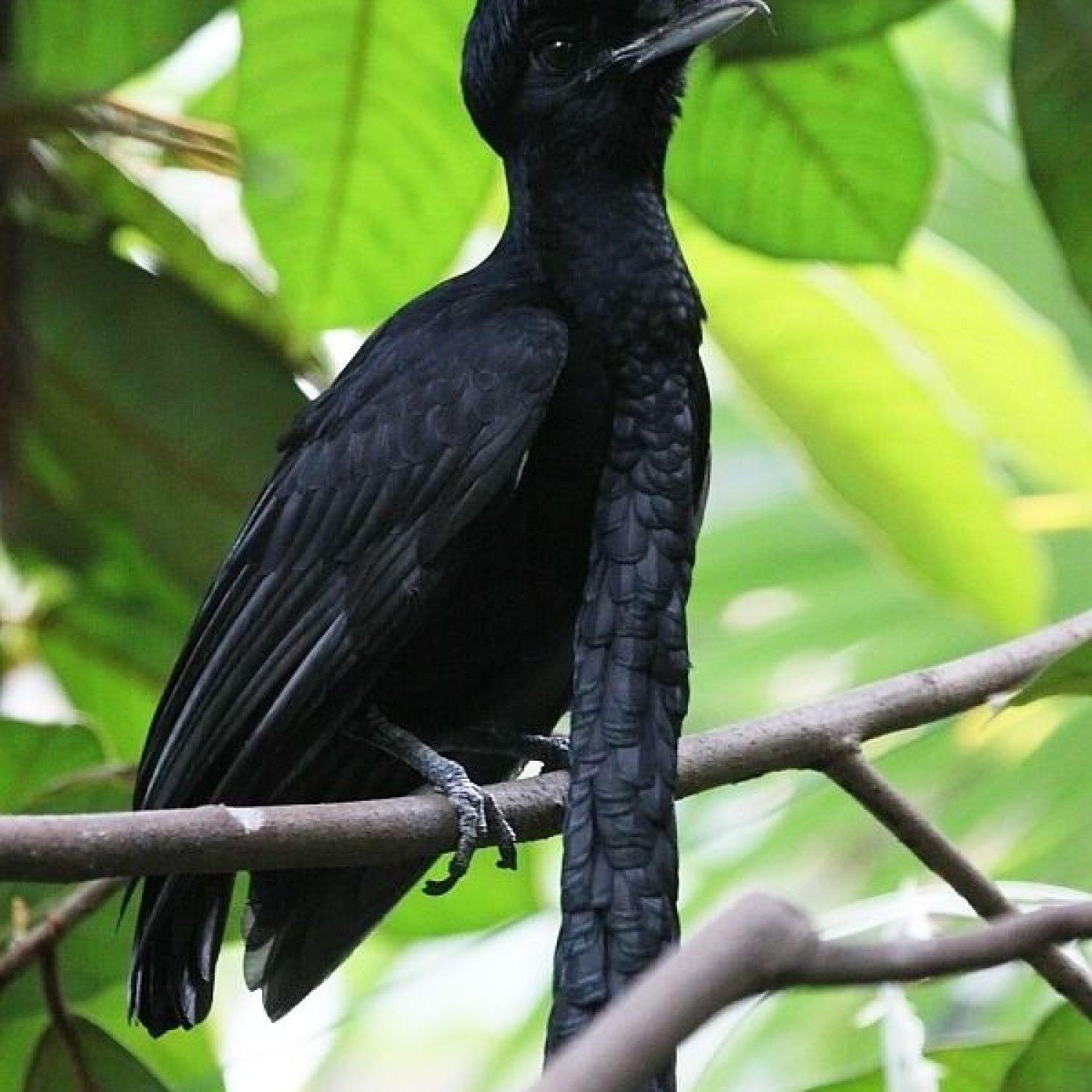
Umbrellabird
50-55 cm
The Umbrellabird, found in lowland rainforests, is a striking bird with a large, stocky body and a long, umbrella-like crest. As part of the Cotingidae family, it is known for its unique mating display and loud calls. With a length of 50-55 cm, this magnificent bird is not to be missed in its natural habitat.
Animal Details Summary:
Common Name: Umbrellabird
Kingdom: Animalia
Habitat: Tropical forests
The Majestic Umbrellabird: A Master of the Tropical Forests
Deep in the lush and vibrant tropical forests of Central and South America, lives a bird that has captured the imagination of many and earned a place of reverence in the natural world - the umbrellabird. Also known as Cephalopterus ornatus, this magnificent creature is a sight to behold with its black plumage, large body, and unique features.The Evolution and Classification of the Umbrellabird
The umbrellabird belongs to the animal kingdom, specifically the class Aves, making it a close relative of other birds such as eagles, parrots, and flamingos. It falls under the order Passeriformes, which includes over half of all bird species in the world Umbrellabird. Within this order, the umbrellabird belongs to the family Cotingidae, a group of birds known for their flashy and often colorful feathers.This family consists of about 60 species, with the umbrellabird being one of the most distinctive and well-known. Its scientific name, Cephalopterus ornatus, comes from the Greek words for "ornate head," referring to the unique feature that this bird is named after - the umbrellalike crest on its head.
The Umbrellalike Crest: A Fascinating Adaptation
The most iconic and memorable feature of the umbrellabird is undoubtedly its incredible crest. The male umbrellabird sports a crest that resembles an umbrella, which extends from its forehead to the back of its head. This unique feature is believed to serve a dual purpose - both as a display for attracting mates and as a natural umbrella, protecting the bird from the rain while foraging for food in the tropical forests.The female umbrellabird, on the other hand, does not have such an elaborate crest but instead has a simple tuft of feathers on its head. This difference in appearance between males and females is known as sexual dimorphism and is common in many bird species.
A Habitat of Breathtaking Beauty
The umbrellabird is found in the tropical forests of Central and South America, specifically in countries such as Colombia, Ecuador, and Peru Uguisu. These birds prefer to live in lowland rainforests, where they can find abundant food and resources.The tropical forests are home to a diverse range of flora and fauna, making it the perfect habitat for the umbrellabird. These forests are also crucial to the survival of many other species and play a vital role in maintaining the planet's ecological balance.
A Diet Fit for a King: The Umbrellabird's Feeding Method
Like many other bird species, the umbrellabird is a frugivore, meaning it primarily feeds on fruits. However, it is not an opportunistic eater like other frugivores; instead, it has a preference for specific fruits found in the tropical forests. These birds play a crucial role in seed dispersal, helping to maintain the biodiversity and ecological balance of their habitat.But the umbrellabird doesn't just settle for any fruit - it prefers to feast on large, soft fruits such as figs, avocados, and papayas. To access these fruits, the umbrellabird uses its sharp beak to open them and obtain the seeds inside without damaging them. This feeding method not only showcases the bird's intelligence and adaptability but also highlights its important role in the ecosystem.
A Majestic Appearance: The Umbrellabird's Physical Characteristics
Apart from its unique crest, the umbrellabird is also easily recognizable for its predominantly black plumage. However, the male of the species stands out with a white patch of feathers on its chest, and its throat is adorned with a patch of bright yellow feathers.Apart from its striking coloration, the umbrellabird is also a large and stocky bird, measuring about 50-55 cm in length. It is an impressive sight to see this majestic bird gliding through the dense forest canopy, with its distinctive crest standing tall against the lush green backdrop.
The Importance of Conservation for the Umbrellabird
The umbrellabird is classified as near-threatened by the International Union for the Conservation of Nature (IUCN). The main threats to this species are habitat loss and fragmentation due to deforestation and agricultural activities. As tropical forests continue to be cleared at alarming rates, the umbrellabird's habitat and food sources are shrinking, putting the bird at risk of extinction.Conservation efforts and strict protection of the umbrellabird's habitat are crucial in ensuring the survival of this magnificent species. Sustainable practices, such as ecotourism and responsible farming, can help minimize the impact of human activities on the bird's habitat.
The Umbrellabird in Popular Culture
The unique appearance and behavior of the umbrellabird have made it a popular subject in art, literature, and even music. It has been featured in traditional Amazonian art and has made multiple appearances in animated movies and TV shows. Its likeness has also been used in various logos and emblems, making it a symbol of strength, beauty, and wisdom.In Conclusion
In conclusion, the umbrellabird is a remarkable species that has captured the hearts of many with its unique appearance and behavior. This bird's existence serves as a reminder of the diversity and beauty of our planet's tropical forests and the importance of protecting these vital ecosystems.As we continue to learn more about the umbrellabird and its role in the natural world, it is our responsibility to ensure that future generations can also experience the majesty of this incredible creature. Let us work together to preserve the habitats of the umbrellabird and other species, allowing them to thrive and continue their crucial role in maintaining the balance of our planet's delicate ecosystem.

Umbrellabird
Animal Details Umbrellabird - Scientific Name: Cephalopterus ornatus
- Category: Animals U
- Scientific Name: Cephalopterus ornatus
- Common Name: Umbrellabird
- Kingdom: Animalia
- Phylum: Chordata
- Class: Aves
- Order: Passeriformes
- Family: Cotingidae
- Habitat: Tropical forests
- Feeding Method: Frugivorous
- Geographical Distribution: Central and South America
- Country of Origin: Colombia, Ecuador, Peru
- Location: Lowland rainforests
- Animal Coloration: Black
- Body Shape: Large and stocky
- Length: 50-55 cm
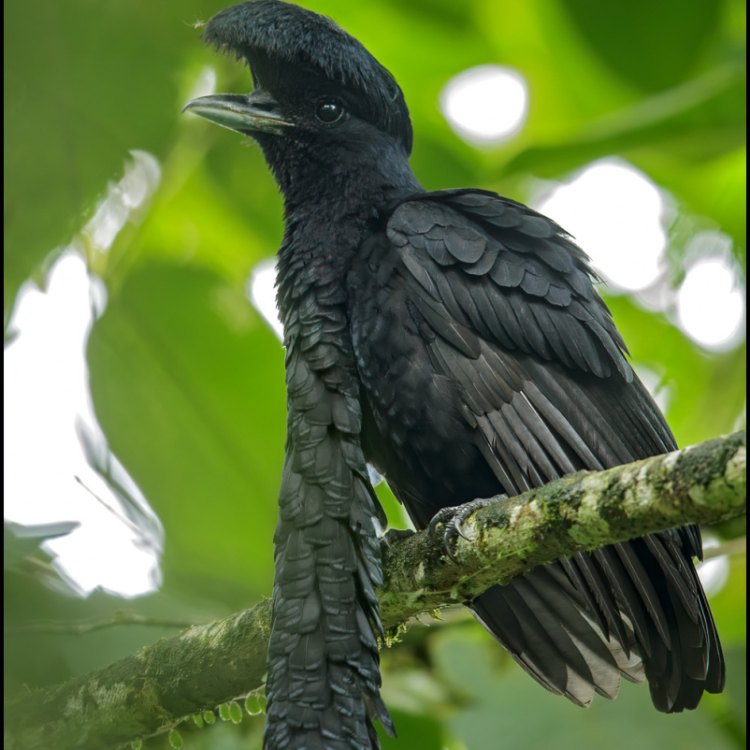
Umbrellabird
- Adult Size: Medium to large
- Average Lifespan: Unknown
- Reproduction: Monogamous
- Reproductive Behavior: Polygynous
- Sound or Call: Loud booming call
- Migration Pattern: Non-migratory
- Social Groups: Solitary or small groups
- Behavior: Shy and elusive
- Threats: Habitat loss and fragmentation
- Conservation Status: Vulnerable
- Impact on Ecosystem: Seed dispersal
- Human Use: None known
- Distinctive Features: Large crest on the head
- Interesting Facts: Male has a large feathered crest that resembles an umbrella
- Predator: Jaguars, ocelots, and other large cats
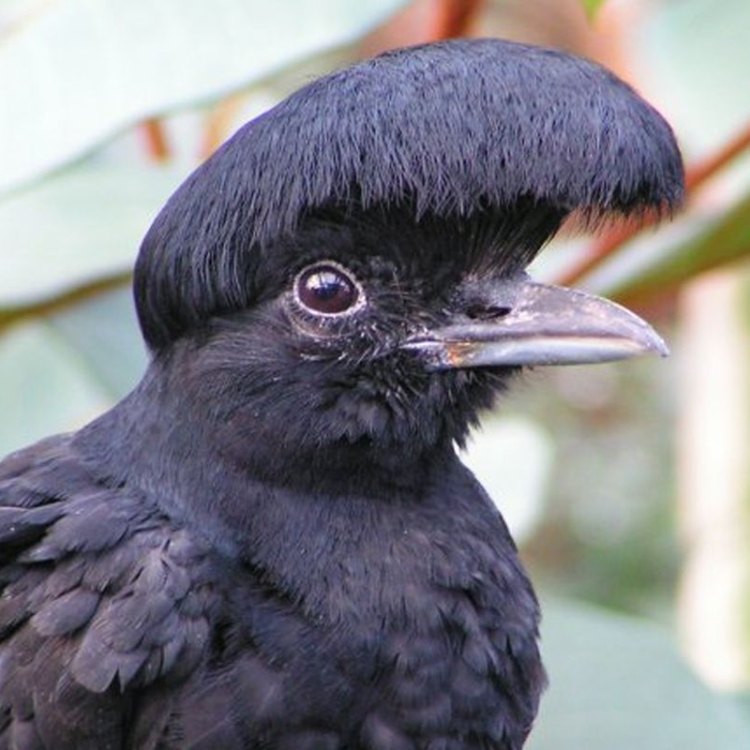
Cephalopterus ornatus
The Fascinating World of the Umbrellabird: A Shy and Elusive Species
The rainforests of South and Central America are home to a vast array of unique and fascinating creatures, and one of the most intriguing among them is the Umbrellabird. This medium to large-sized bird with its distinctive features and behaviors has captured the imaginations of scientists and nature enthusiasts alike. In this article, we will dive into the captivating world of the Umbrellabird and discover the secrets of this elusive species.Adult Size and Average Lifespan
The Umbrellabird is a medium to large-sized bird, with the males being larger than the females PeaceOfAnimals.Com. They can range from 17 to 22 inches in length and weigh between 1.5 to 2.5 pounds. They have a wingspan of about 3 feet, making them impressive in flight. However, despite their large size, not much is known about their average lifespan in the wild due to their shy and elusive nature.
Reproduction and Reproductive Behavior
The Umbrellabird is a monogamous bird, meaning they mate and stay with one partner for life. However, their reproductive behavior is known to be polygynous, where the male has multiple female mates. The males attract females by displaying their impressive crest and performing a series of loud calls and displays. Once the female has been courted, they will build a nest together and take turns incubating the eggs Ural Owl.
Sound or Call
The most recognizable feature of the Umbrellabird is its loud and distinctive booming call. This call, which can be heard over long distances, is produced by the male during their courtship displays to attract female mates and also to establish their territory. The call is similar to the sound of a drum and can reach up to 110 decibels, making it one of the loudest calls produced by any bird in the world.
Migration Pattern
Unlike many bird species, the Umbrellabird is non-migratory, meaning they do not need to travel long distances to find suitable habitat or food sources. They are well adapted to living in the dense rainforests and can thrive in one particular area without needing to migrate.
Social Groups and Behavior
Umbrellabirds are known to be solitary birds, only coming together in small groups during mating season. Outside of breeding season, they prefer to live alone and are rarely seen in large groups. They are also known to be shy and elusive, preferring to stay hidden in the thick foliage of the rainforest.
Threats and Conservation Status
Unfortunately, the Umbrellabird is facing many threats in its natural habitat, primarily due to habitat loss and fragmentation. Deforestation, primarily for agriculture and logging, has significantly reduced their suitable living space, leaving them vulnerable to extinction. Pollution and climate change also pose a threat to their survival.
As a result, the Umbrellabird is listed as vulnerable on the IUCN Red List, meaning they are facing a high risk of extinction in the wild if significant conservation efforts are not made.
Impact on Ecosystem
The Umbrellabird plays a crucial role in the health and balance of rainforest ecosystems. As they forage for food, they also help disperse seeds, aiding in the growth and diversity of plant life. This process is essential for maintaining a healthy and thriving ecosystem.
Human Use
There is no known use of the Umbrellabird by humans. They are not hunted for food or any other purpose. However, their existence is crucial to the overall health of the rainforest and the species it supports.
Distinctive Features
The Umbrellabird is easily recognizable by its large crest, resembling an umbrella, on the top of its head. This feature is unique to the male of the species and plays a significant role in their courtship displays and attracting mates. The female does not have a crest and is considered less visually striking than the male.
Interesting Facts
Male Umbrellabirds have one of the largest feathered crests of any bird species, sometimes measuring up to half their body length. The size and shape of the crest can also vary among individuals, making them even more unique and fascinating to observe.
The Umbrellabird also has a special adaptation that allows them to swallow particularly large fruits whole. Their throats are able to stretch to accommodate the fruit, and they only need to eat a few large fruits to fulfill their nutritional needs for the day.
Predators
As with many species, the Umbrellabird has its share of natural predators, including jaguars, ocelots, and other large cats. However, their elusive nature and habitat in the dense rainforest help protect them from these predators.
In conclusion, the Umbrellabird is a remarkable species with its unique features, behaviors, and role in the ecosystem. However, due to habitat loss, they are facing a high risk of extinction in the wild, highlighting the importance of conservation efforts to protect this magnificent bird for future generations to appreciate and admire. By understanding and appreciating the Umbrellabird, we can raise awareness about the importance of preserving rainforests and the diverse wildlife that calls it home. Let us all do our part to protect and conserve the delicate balance of nature and the fascinating creatures that inhabit it.
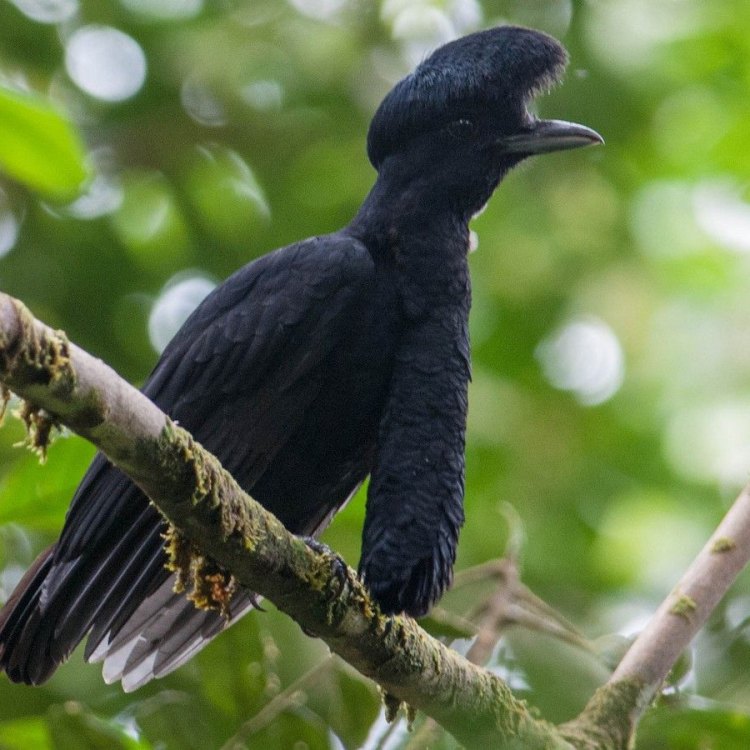
The Majestic Umbrellabird: A Master of the Tropical Forests
Disclaimer: The content provided is for informational purposes only. We cannot guarantee the accuracy of the information on this page 100%. All information provided here may change without prior notice.






